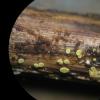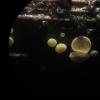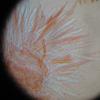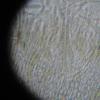
03-04-2011 23:00
 Raúl Tena Lahoz
Raúl Tena Lahoz
Hola a todos I am trying to distinguish between

30-03-2011 22:26
 Martin Bemmann
Martin Bemmann
Dear all, today I found on dead overwintered te

30-03-2011 20:12
Marja PennanenHello, I been traveling by bus to get some educ

29-03-2011 21:31
Amy RossmanDear Ascofrance Folks, Some years ago Lisa Cast
Lachnum ?
Michel RIMBAUD,
07-04-2011 22:40
Récolte sur tige de Phragmites morte .
Petit disque stipité diam -->1mm. Entièrement jaune soufre, poilu.
Asques J+ mono à bisériées 4,5 x 45µ. Spores fusiformes 1,5-2 x 9-12µ non septées.
Paraphyses lancéolées 5 x 75µ. Poils finement incrustés, cylindriques à bout arrondi, non septés, diam. 3,5µ.
Je pense à Lachnum diminutum, mais la littérature le donne sur Juncus.
Merci de m'éclairer.
Michel
Hans-Otto Baral,
07-04-2011 23:15

Re:Lachnum ?
This is obviously Lachnum winteri. It is very close to L. controvesrum, but mainly differs in the yellow color. If you mount in water, you willl see the paraphyses filled with nice yellow droplets
Zotto.
Zotto.
Hans-Otto Baral,
07-04-2011 23:15

Re:Lachnum ?
This is obviously Lachnum winteri. It is very close to L. controvesrum, but mainly differs in the yellow color. If you mount in water, you willl see the paraphyses filled with nice yellow droplets
Zotto.
Zotto.




